Galleries - Road to the Rising
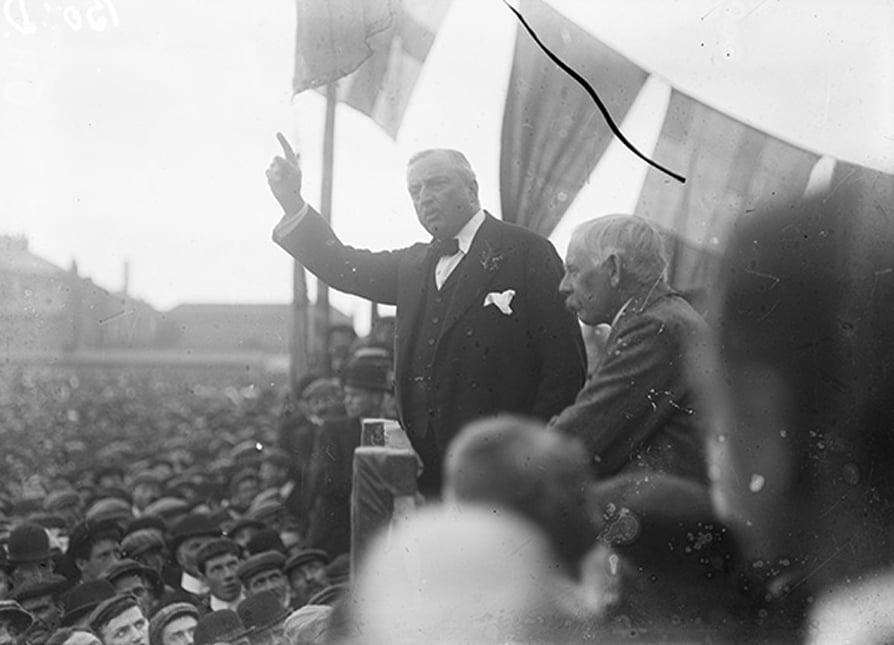
In 1912 the Government of Ireland bill was introduced to parliament, meaning Home Rule would eventually become a reality. Irish Parliamentary Party leader, John Redmond, pictured here, was heralded a hero. (National Library of Ireland, INDH 0009)
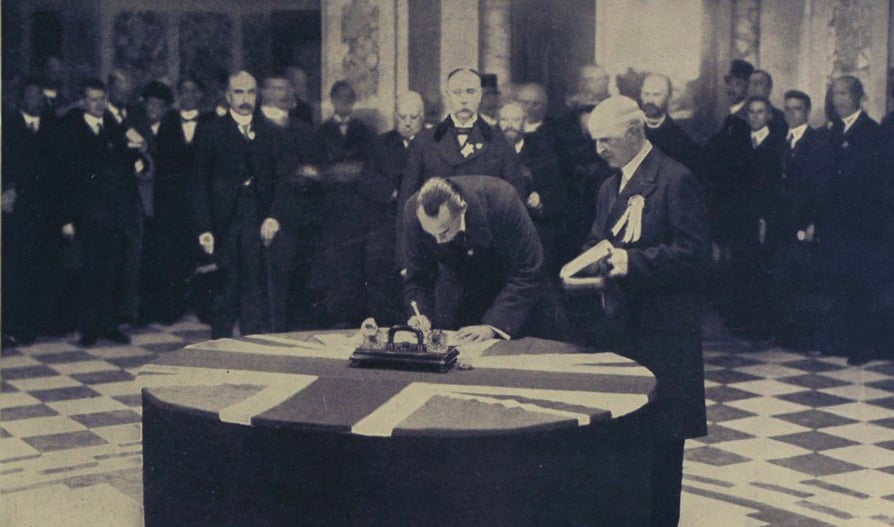
The Unionists, led by Edward Carson were against it. Here he is seen signing the Ulster Solemn Covenant, in which the Unionists pledged they would defend themselves against Home Rule. (Illustrated London News, [London, England] 5 Oct 1912)

In December 1912 the Ulster Volunteer Force was formed. Here they are seen in September 1913 in Balmoral. (Illustrated London News, [London, England], 4 October 1913)
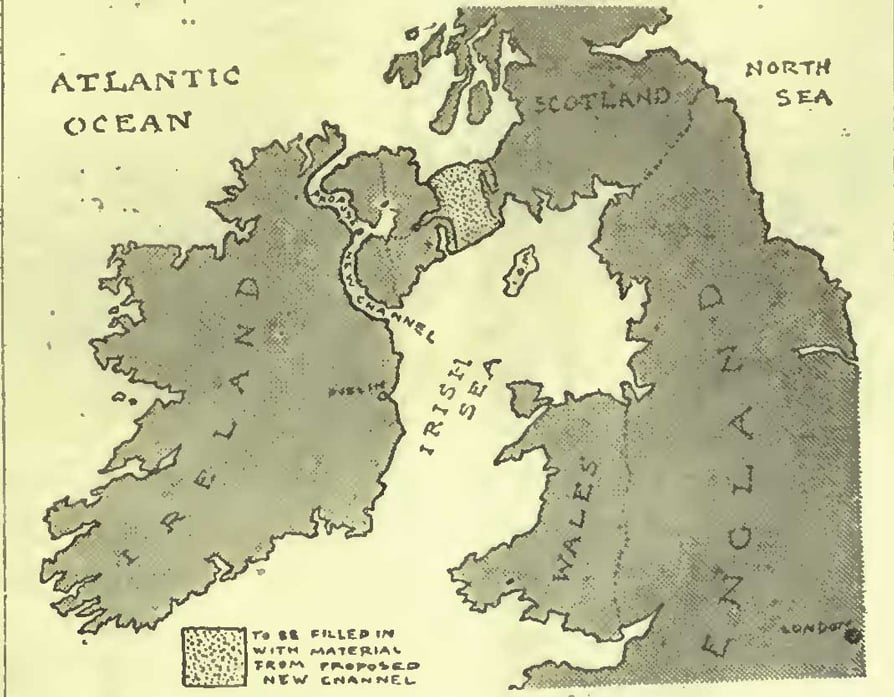
In October 1913, admidst disputes between north and south, Churchill proposes a partition. This is immediately rejected by the Nationalists. (Punch, 8 October 1913)
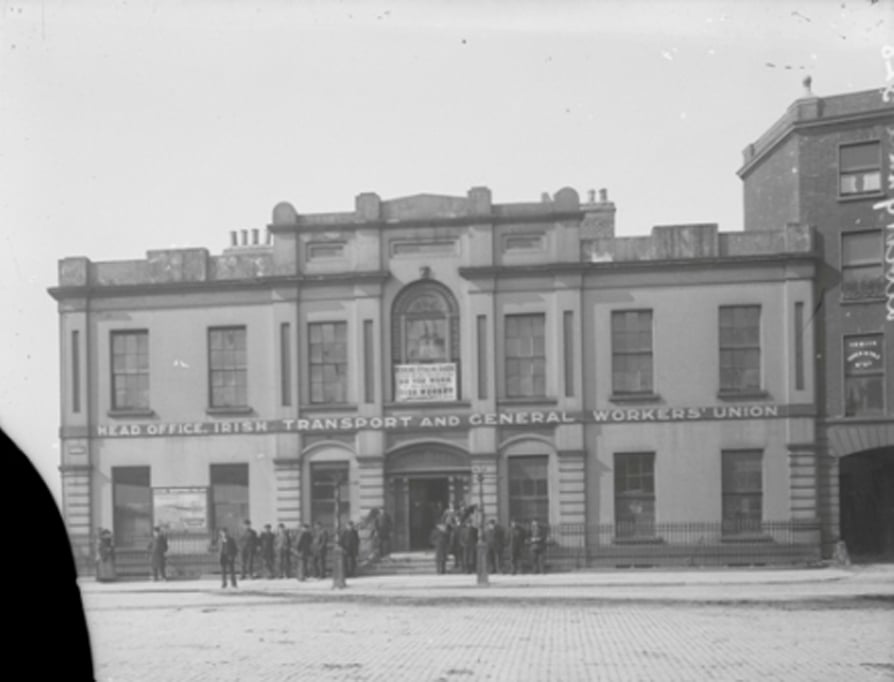
As the Lockout continues during 1913 the Irish Citizen Army is founded at Liberty Hall by James Connolly to defend the rights of the workers. (National Library of Ireland, KE 202)
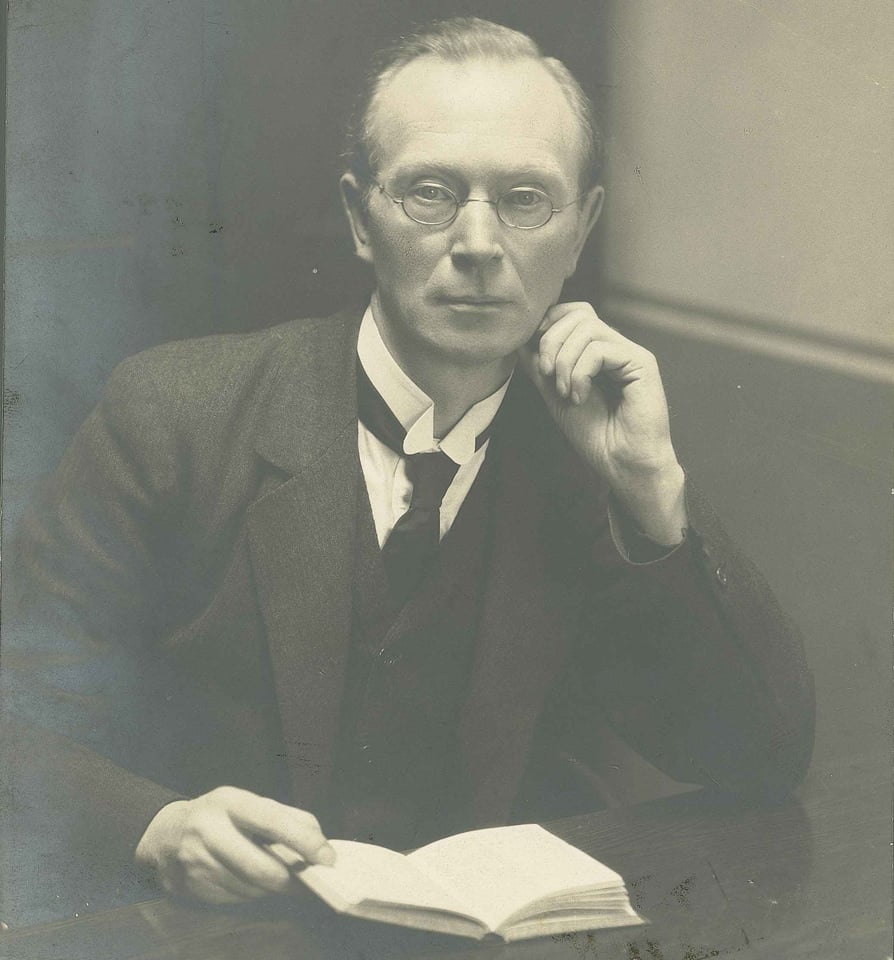
In November 1913, Eoin MacNeill publishes an article called 'The North Began' in An Claidheamh Soluis as a response to the UVF. This acts as an impetus to the formation of the Irish Volunteer Force. (UCD Archives)
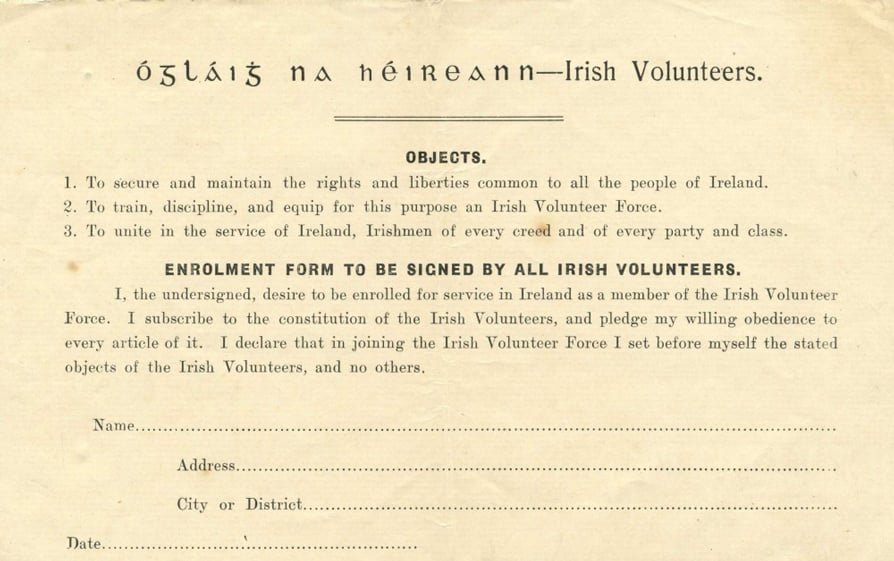
After a meeting in the Rotunda, attended by nearly 7,000 people the Irish Volunteers were formed. (National Library of Ireland, MS 11396)
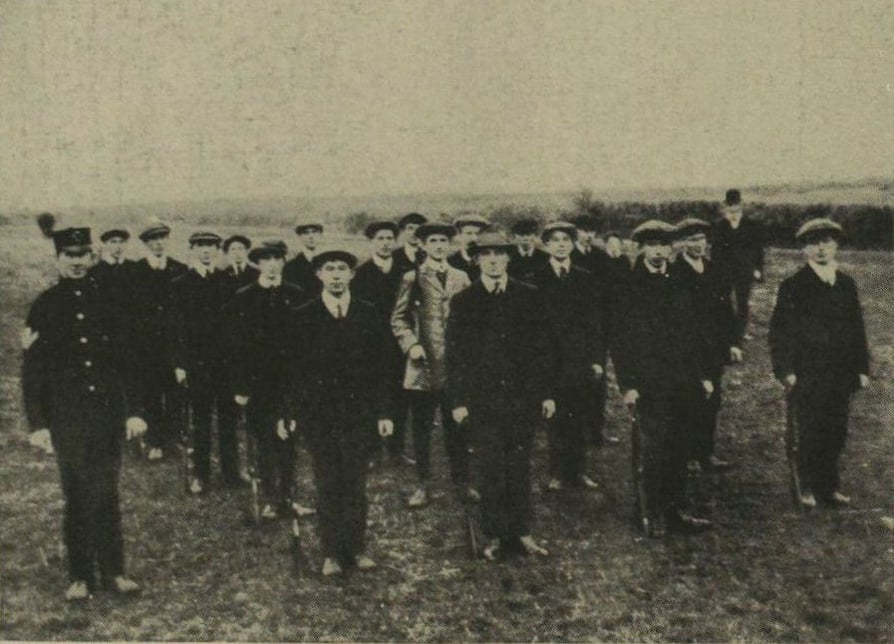
The Volunteers set out their object as ‘to secure and maintain the rights and liberties common to all the people of Ireland' and begin drilling. (Illustrated London News [London, England], 7 Feb 1914)
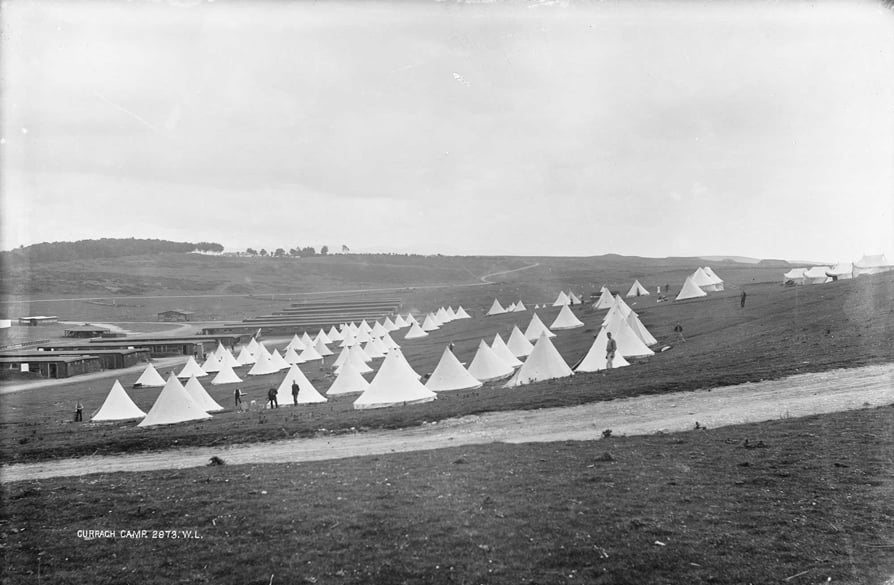
In March 1914 at the Curragh Camp in Kildare, 100 officers voice their opposition when it is suggested they might be forced into action against the Ulster Volunteers. (National Library of Ireland, LCAB 02873)
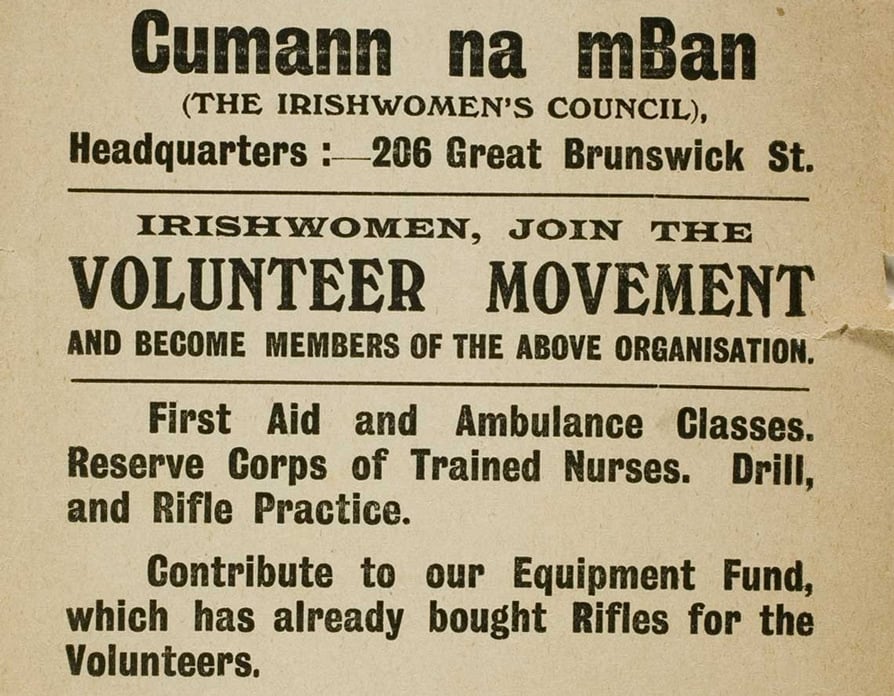
After a meeting in Wynn's Hotel, Dublin the women's revolutionary group Cumann na mBan is founded. (National Library of Ireland)
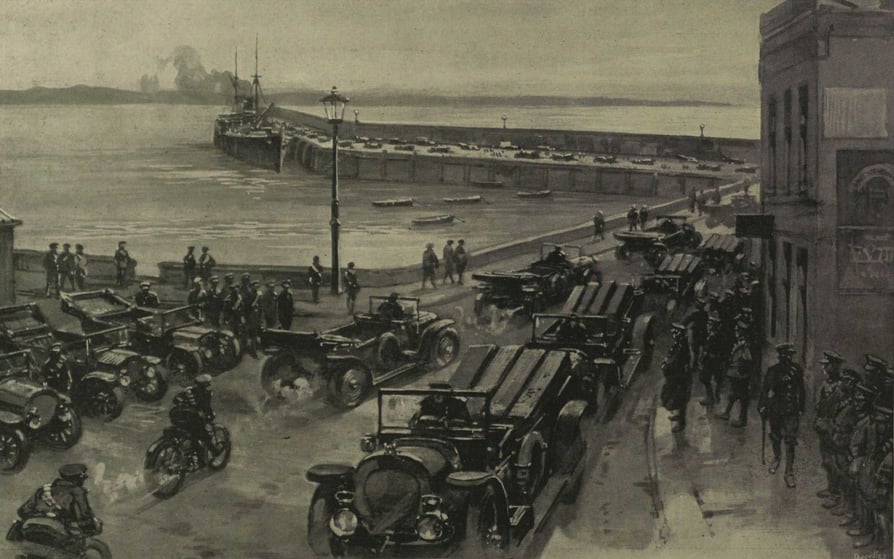
In April 1914 a shipment of guns is smuggled into Ulster by the secret committee of the Ulster Unionist Council, thus arming the UVF. (Illustrated London News, [London, England], 2 May 1914)
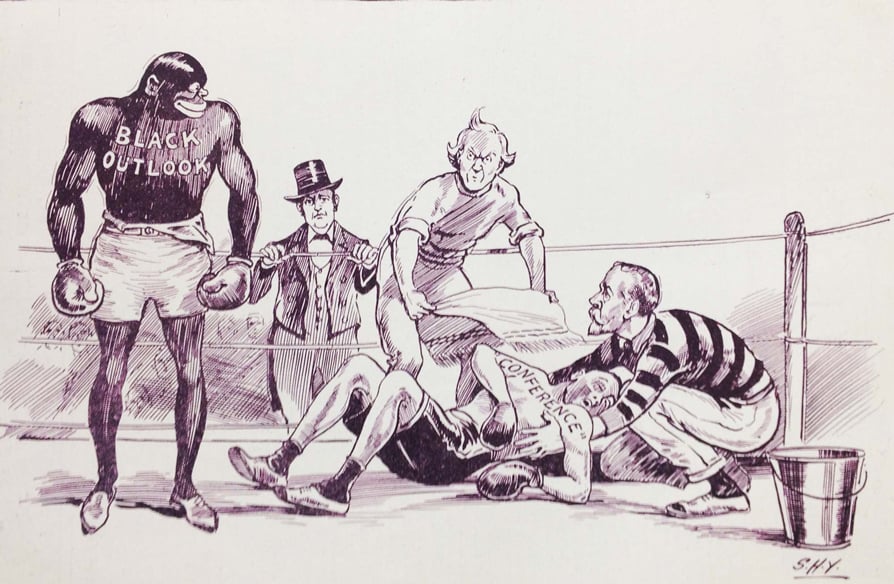
As tensions reach a high over Home Rule a conference is called in Buckingham Palace to find a solution. It is attended by Redmond and Carson but it ultimately it ends in failure. (Irish Life, 31 July 1914)
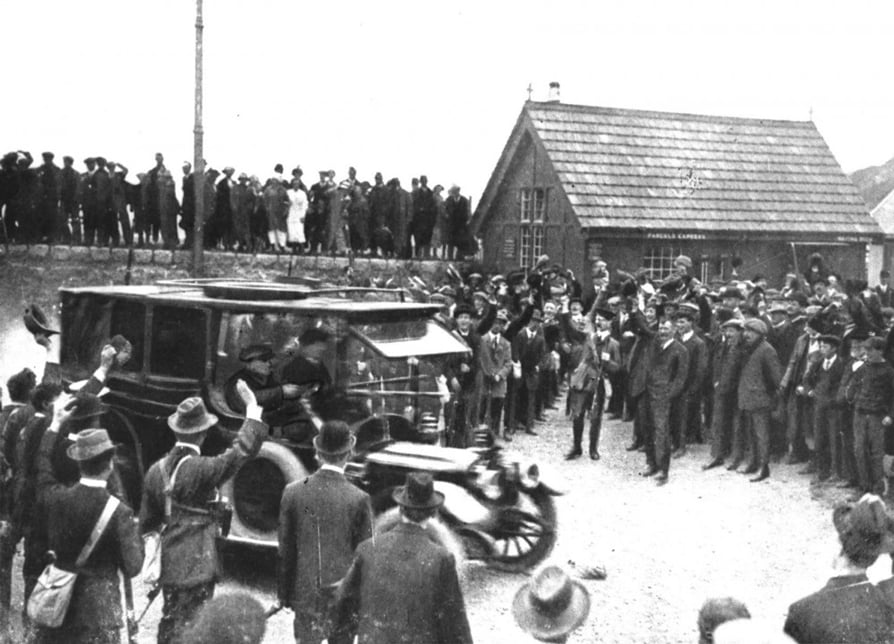
In July 1914 a shipment of 900 rifles and ammunition arrive in Howth for the Irish Volunteers. After the shipment arrives, three civilians are shot dead in Bachelor's Walk by British soldiers. (RTÉ Stills Library)
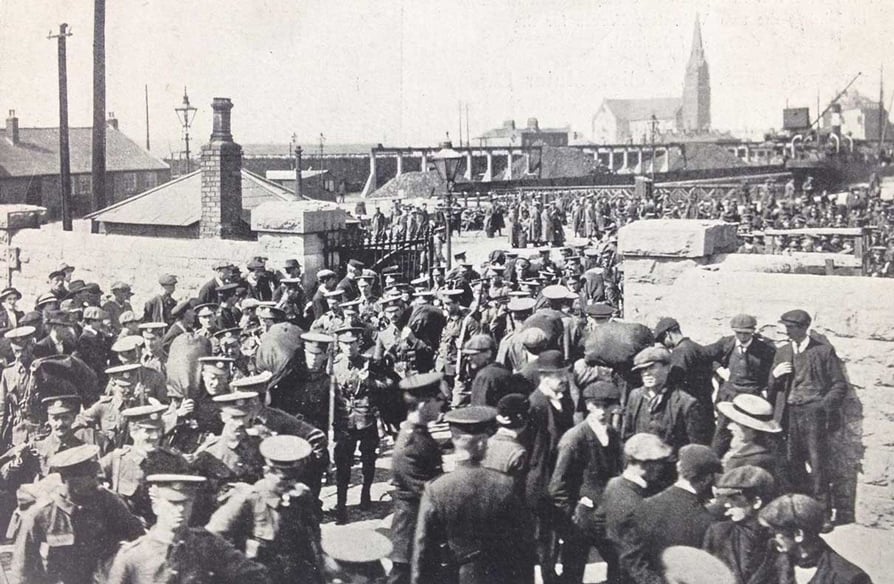
In July 1914 the assassination of Archduke Franz Ferdinand triggers a war in Europe. By August England are also at war and many Irish men enlist. Here, they leave North Wall, Dublin for the front. (Irish Life, 14 August 1914)
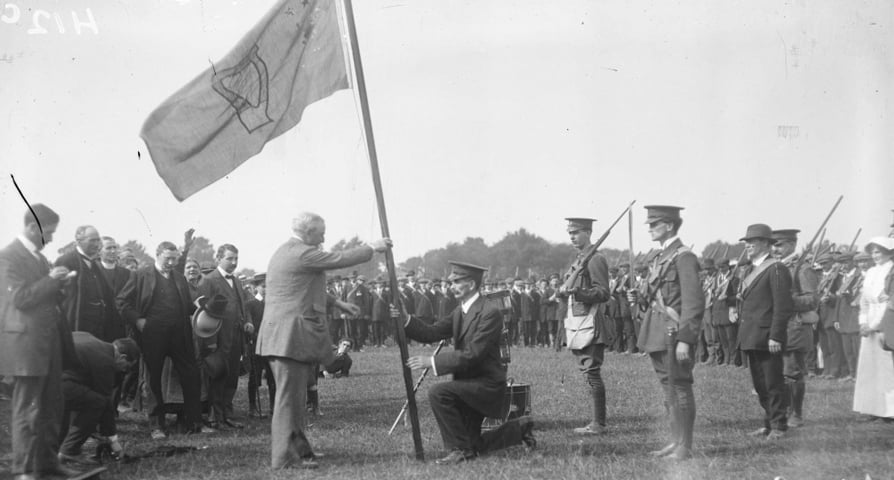
In September 1914 after Redmond calls on the Irish Volunteers to join the British army. The movement splits into the pro-Redmond, National Volunteers and the more radical, smaller Irish Volunteers. (NLI, INDH12c)
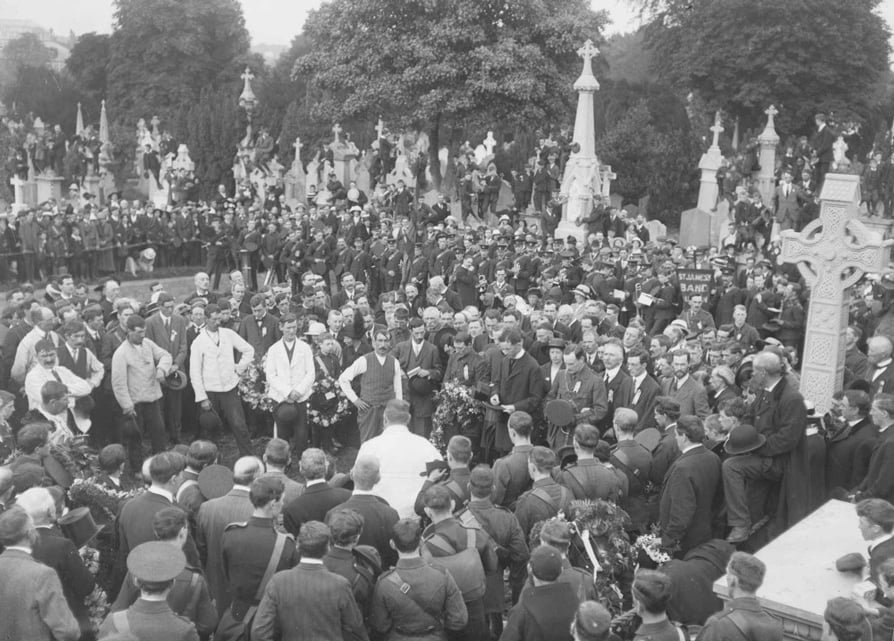
In August 1915 the funeral of Fenian leader Jeremiah O’Donovan Rossa takes place in Glasnevin. The occasion is used by republicans for propaganda purposes & Pearse speaks; ‘Ireland unfree shall never be at peace’ (NLI)
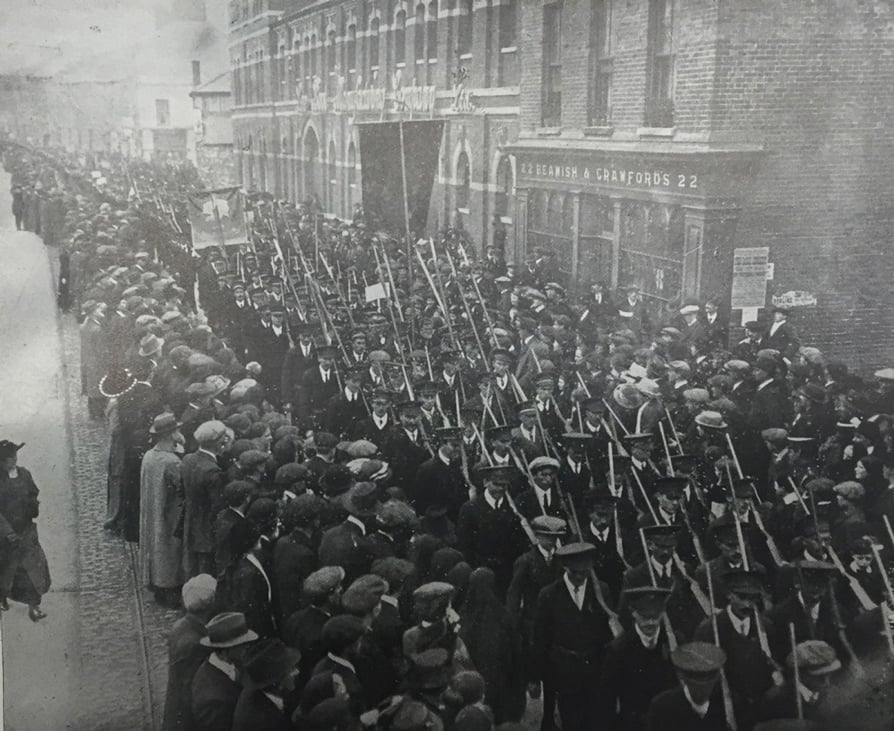
Throughout 1915 and early 1916 the Irish Volunteers continue to drill. Here a group of them are seen marching in the St Patrick's Day parade in Cork. (Manchester Guardian History of War, 1916. Full collection available in the NLI)
Century Ireland
The Century Ireland project is an online historical newspaper that tells the story of the events of Irish life a century ago.
